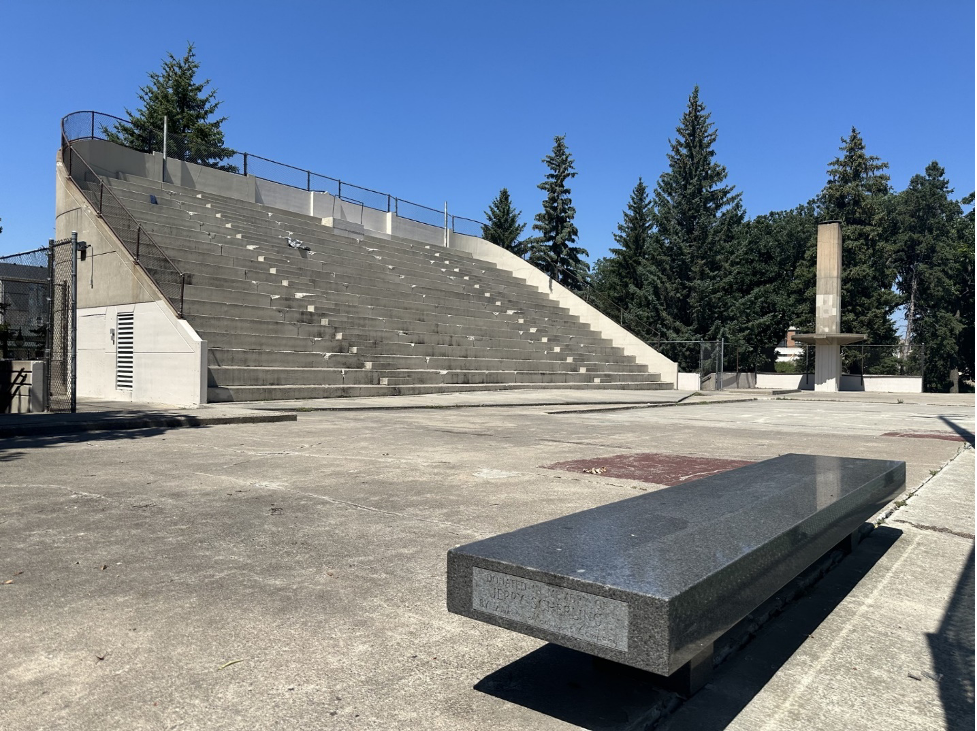Clay County Histories
Markus Krueger | Program Director HCSCC
In the 1950s, California surfer kids nailed roller skate wheels to wooden planks and “skateboarded” when the waves weren’t cooperating. A new sport/lifestyle/form of transportation was born. In the 1960s, Californian surfer culture spread across America through oodles of beach party movies and music like the Beach Boys. Kids around here didn’t have an ocean to surf on, but they did have planks of wood and old roller skates for “sidewalk surfing.” The number of skateboarders exploded, but the bubble burst in the early 1970s, and people thought skateboarding might go the way of the hula hoop – a passing fad.
But skateboarding evolved. The first skateboarders got their thrills by going down hills real fast and they showed their skills by slaloming skier-style around objects. Then a major drought hit California in 1976-77 and changed everything. Concrete drainage ditches went dry. Water rationing forced people to drain their outdoor pools. Suddenly, skateboarders found a new habitat. The pools and dry ditches became playgrounds for skateboarders who developed a new style of vertical skating, or “vert skating” for short. They would skate up the walls of the pools, launch themselves into the air, and see how many tricks they could do before gravity returned them to earth again. You may have seen this at the Olympics recently.
To speak in evolutionary terms, skateboarders saw changes in their environment, adapted to it, thrived, and multiplied in number. In other words, it was fun, so more people did it. Entrepreneurial types, realizing the pools would refill once it rained again, opened skateparks across the country where they mimicked the ramped pool walls, improved upon them, and repeated them. There was even one in Fargo: American Sportsman Skateboard Skating Park at 2502 University Drive. If anyone has any stories or photos of this skatepark, let me know.
The late-1970s skateparks went extinct shortly after they hatched. They were victims of one of America’s abundant natural predators: lawyers. Kids got hurt, parents sued, and skatepark owners realized this was all a bad idea. Fargo’s skatepark only appears in one city directory: 1978-79.
When the skateparks closed, America’s skateboarders were out on the street. But they realized that the street was really fun! They adapted by treating the urban landscape – concrete walls, metal railings, park benches – as free skateparks. They formed a new style of skateboarding: “street skating,” where they just do tricks off whatever is around. You may have seen this at the Olympics recently.
Skateboarders thrived and their numbers again multiplied. Marty McFly, Bart Simpson, the Teenage Mutant Ninja Turtles, the guy on my 5th grade trapper keeper notebook – all were skaters. But their rising numbers led to the destruction of property. To make their environment more fun to skate on, they sanded concrete smooth or smeared it with slippery black canning wax. Laws against skateboarding within Fargo’s city limits in the 1990s-2000s hindered skaters but did not stop them from spreading.
The young punk skateboarders of 30 years ago morphed into grownups. They passed recreational immunity laws so we can let kids play dangerously without getting sued. They built new skateparks, like Dike West in 2003, the Hawk’s Nest in 2011, the one that appeared under the 1st Avenue Bridge last year, or the one about to be built at Romkey Park. Skateboarding keeps adapting, evolving, and spreading worldwide.


